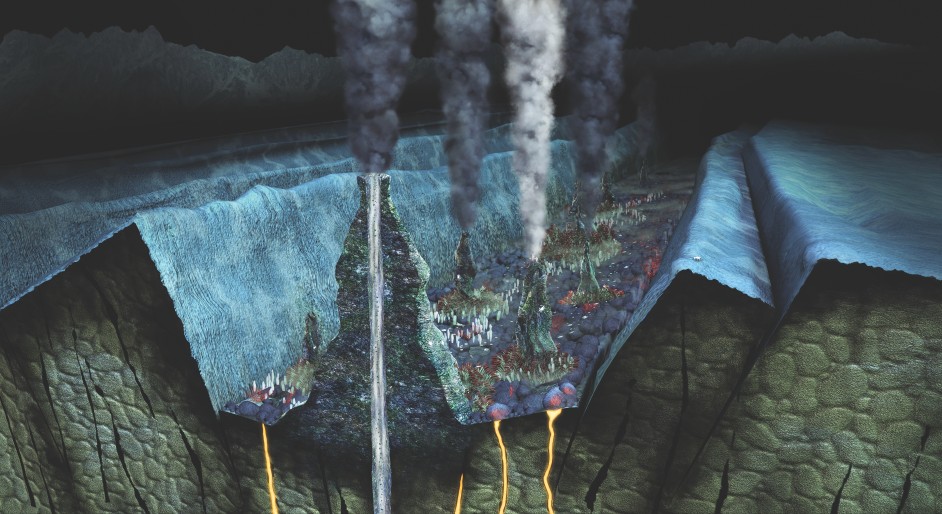Hydrothermal vents

[fototag id=”Vent”]
The deep ocean is one of the harshest places to live on our planet – cold, dark and with pressures up to 250 times greater than on land. When scientists discovered the first hydrothermal vent in 1977, they were amazed to see heaps of clamshells clinging to it and large colonies of shrimp.
Volcanic, or hydrothermal, vents (also called smokers) are similar to hot springs on land, but sit around 2,100 metres (7,000 feet) beneath the ocean surface. Superheated water spews out of cracks in the seabed forming plumes of mineral particles that look like smoke. Fragile chimneys of minerals up to ten metres (33 feet) high form around the plumes and can grow upwards at 30 centimetres (12 inches) a day.
Temperatures vary between two degrees Celsius (35.6 degrees Fahrenheit) in the deep ocean to above boiling point around the vents. The water is heated by molten rock close to the seabed. Cracks and hot rocks are found at rifts where vast tectonic plates that make up Earth’s crust are slowly moving apart. New ocean crust is created in the gaps between plates.
No one knows how many vents exist. The deep ocean is largely unexplored by humans – the first vents were photographed by unmanned research submersibles. The vents cool after a few years or decades as new ocean crust moves outwards from the mid-ocean ridges by 6-18 centimetres (2.4-7 inches) per year. New vents are quickly colonised by bacteria, which live in deep-sea rocks and water in small numbers.
Since vents were discovered, they’ve been found in the Pacific and Indian Oceans, in the mid-Atlantic and the Arctic. Species vary between vents. In the Atlantic Ocean, for example, there are no worms, clams nor mussels, but many white shrimp.




